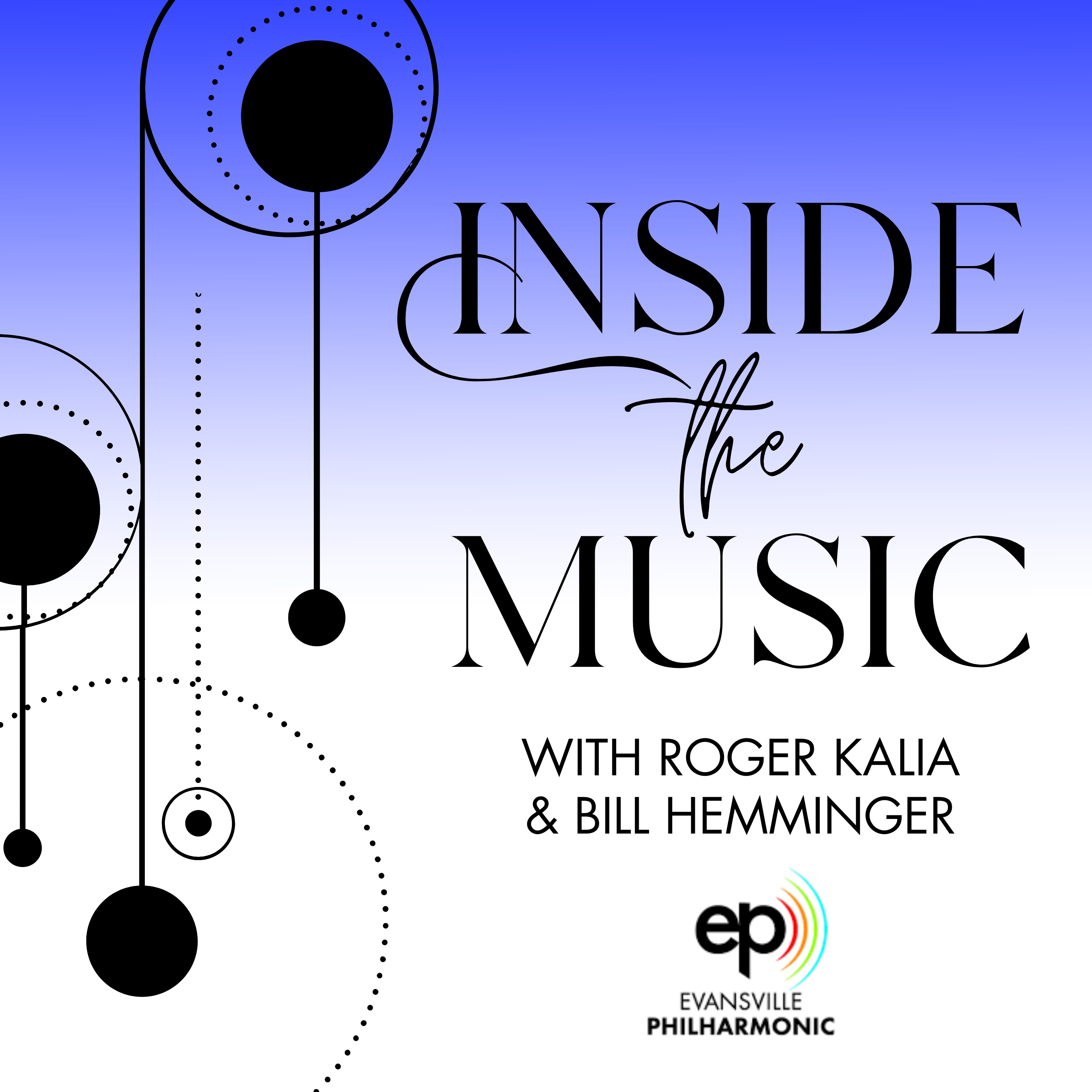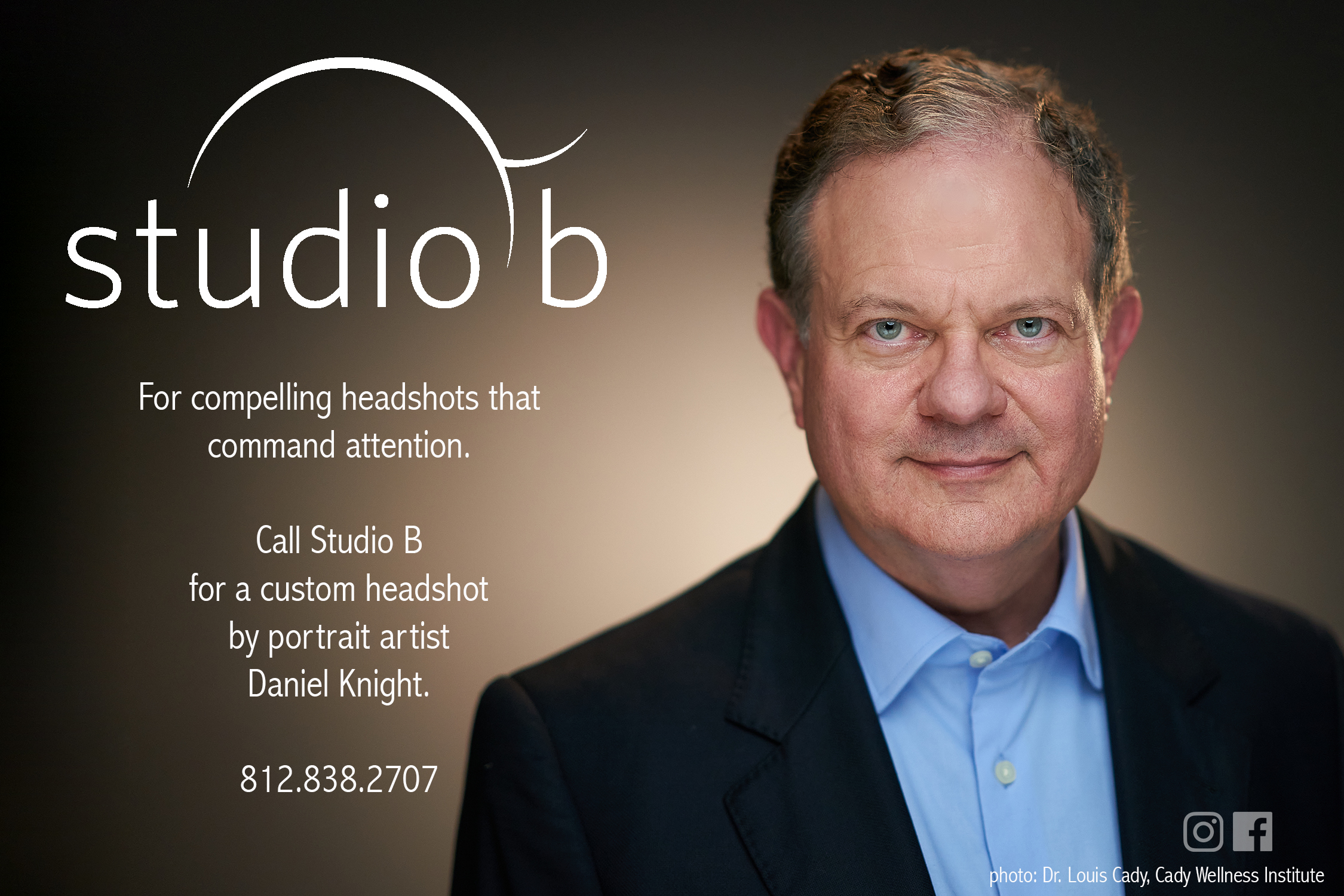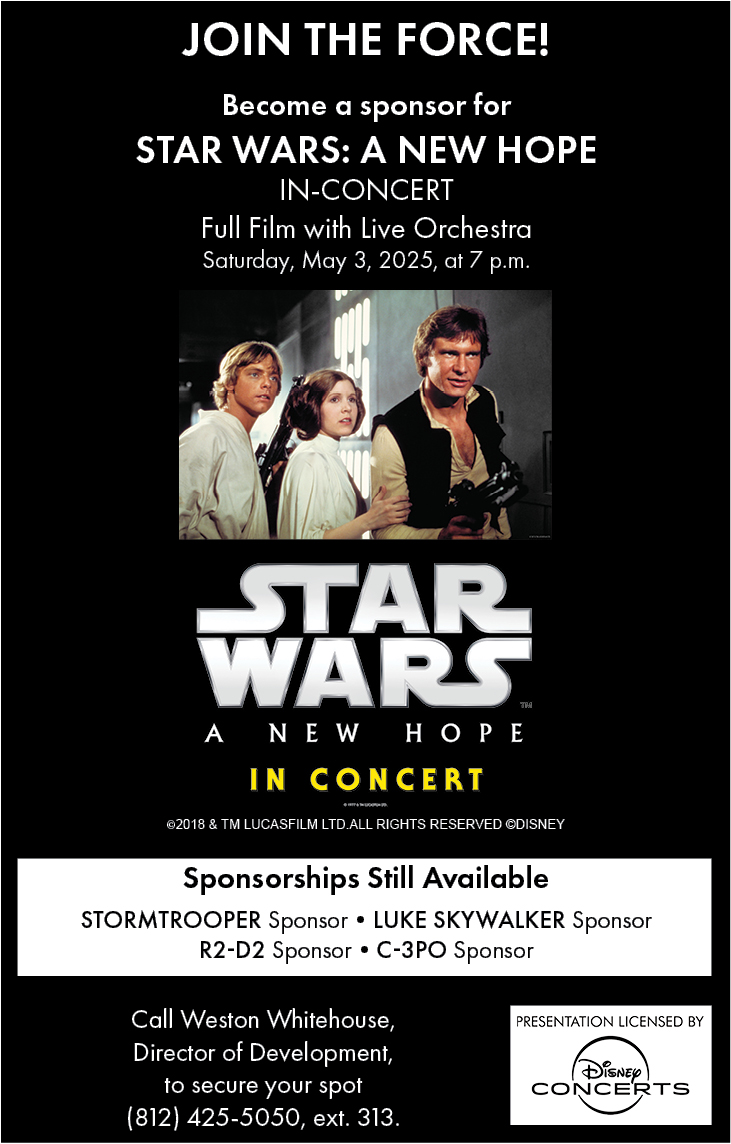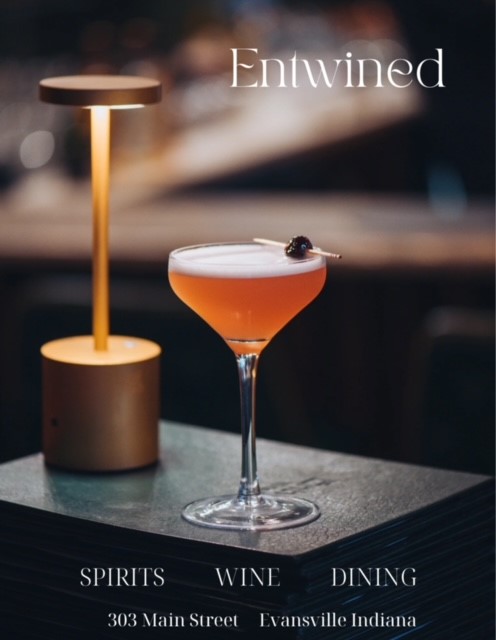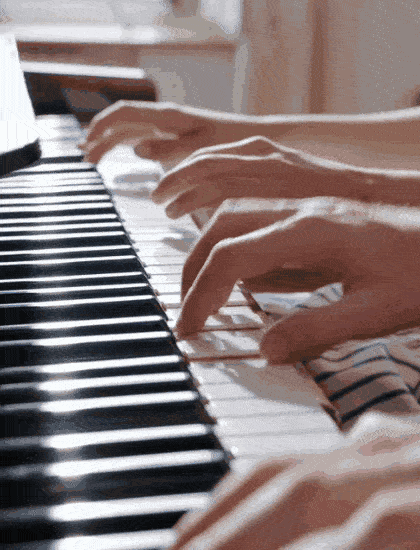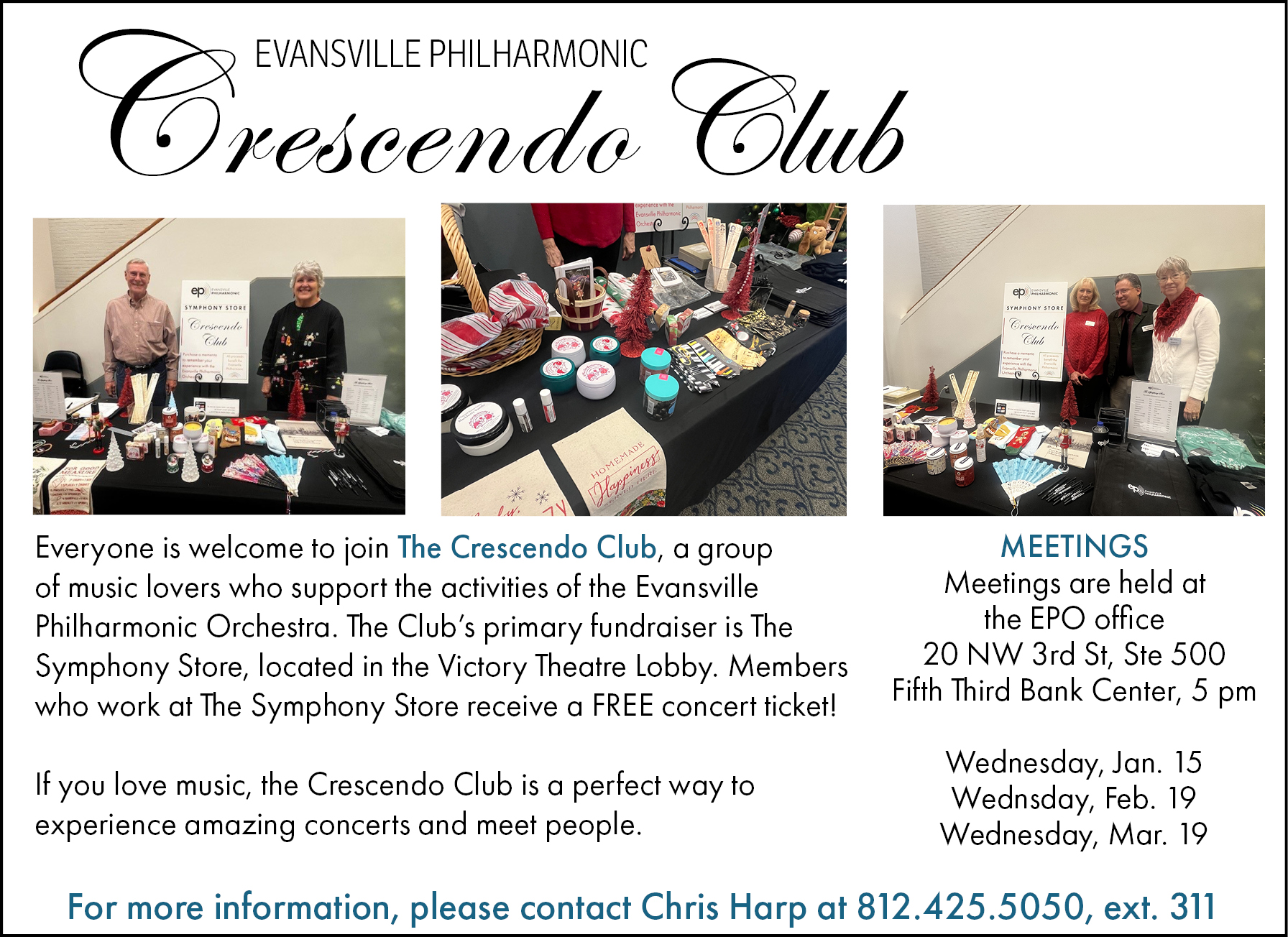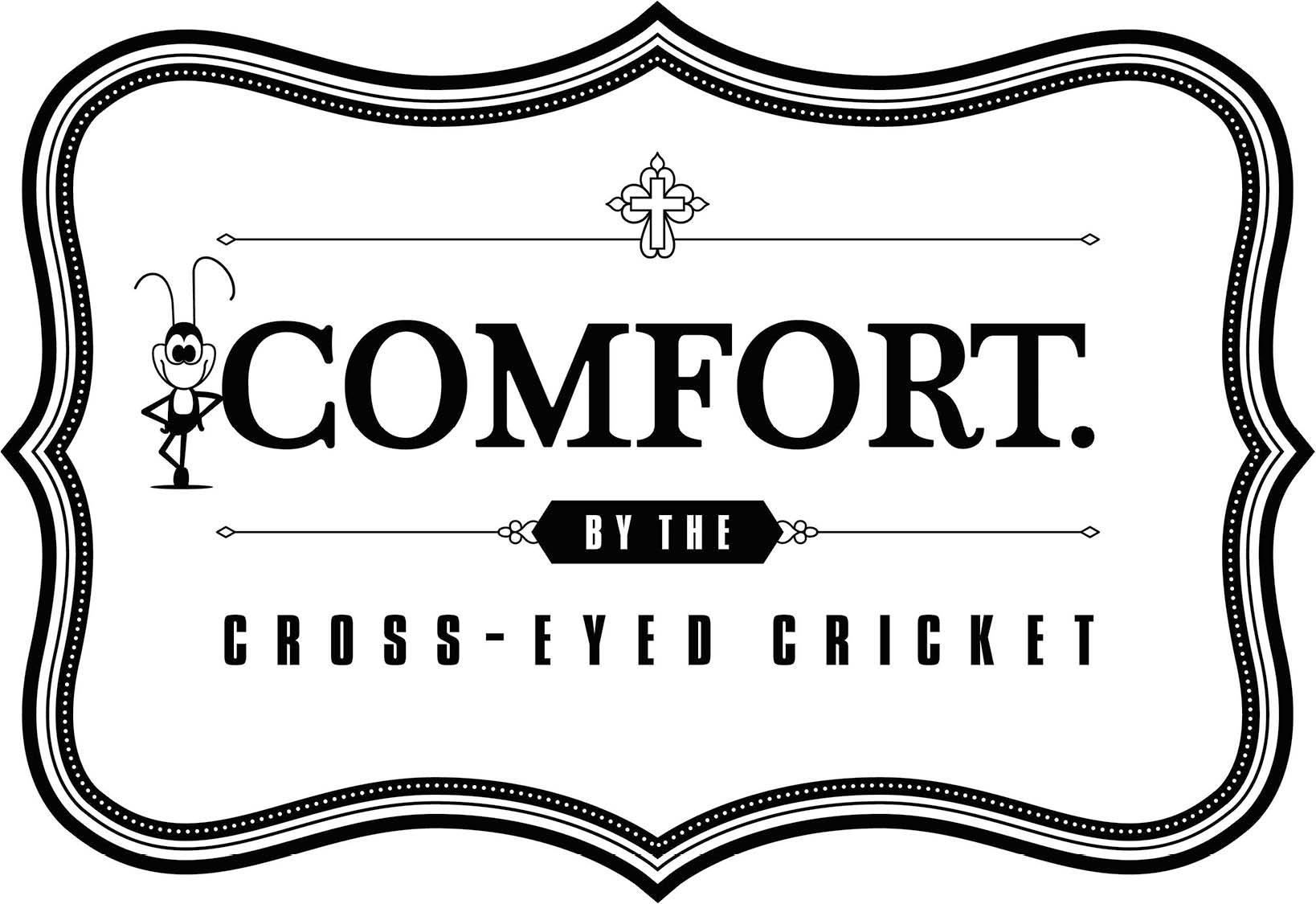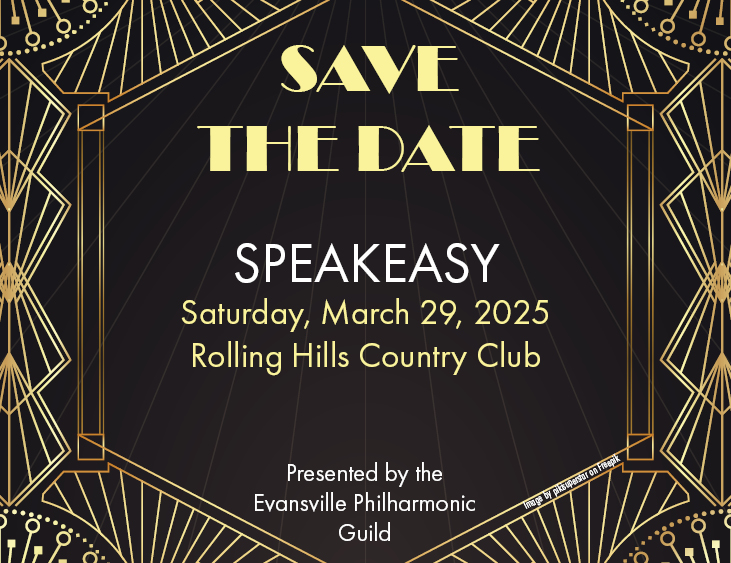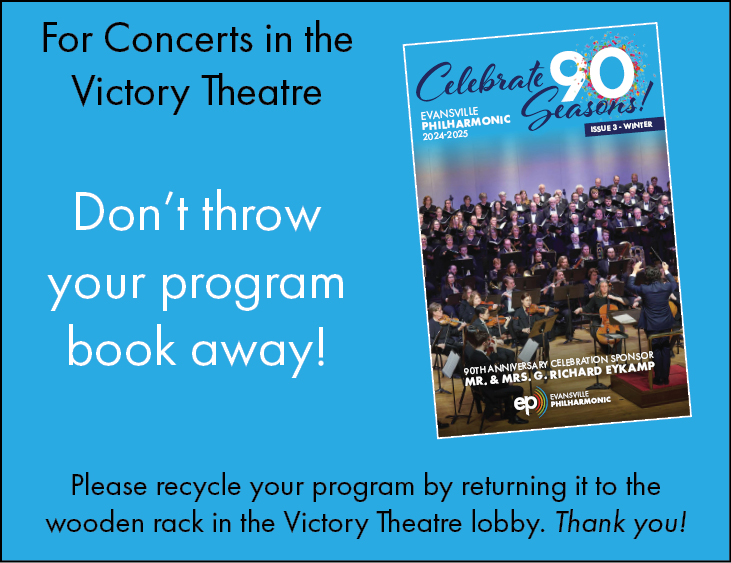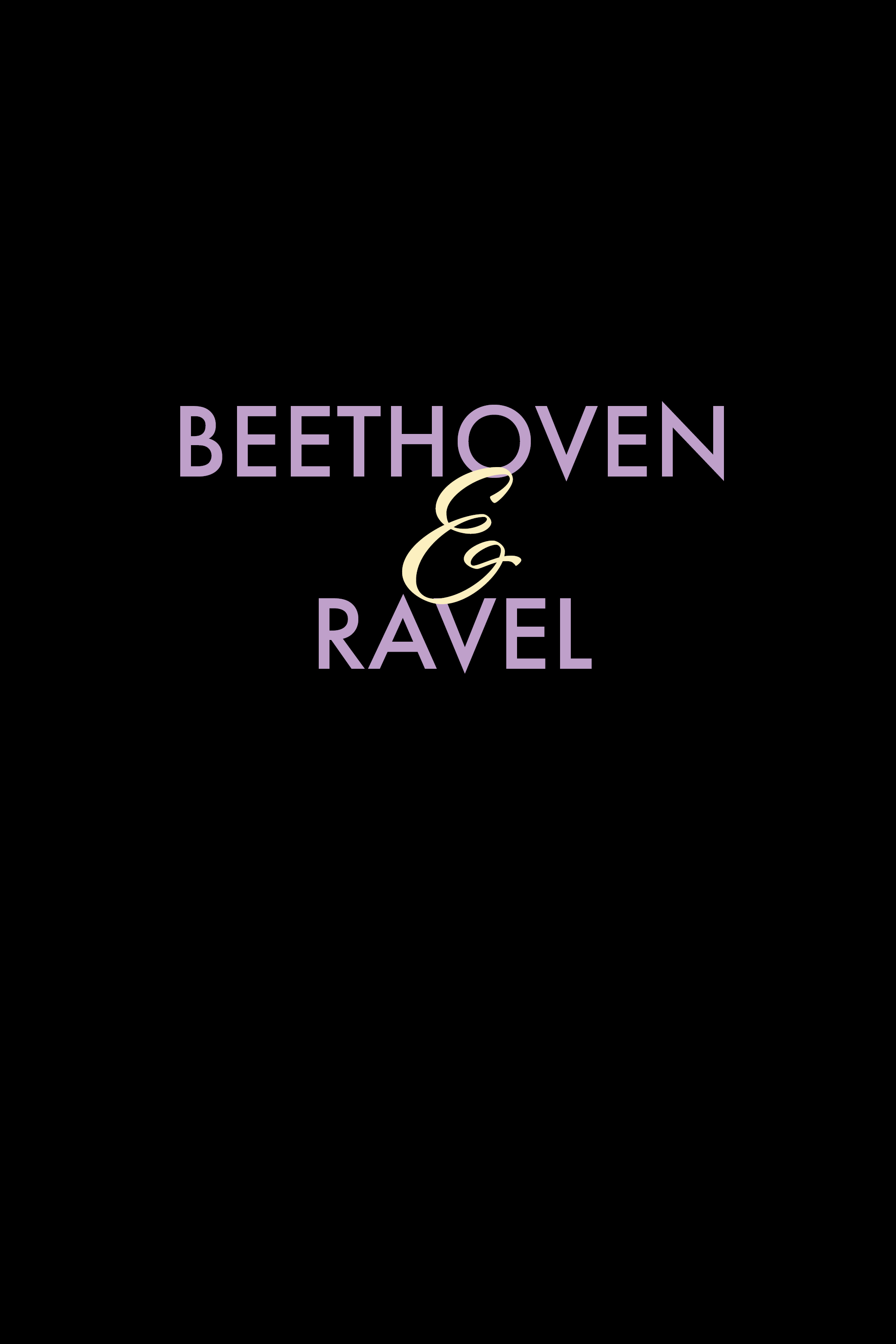

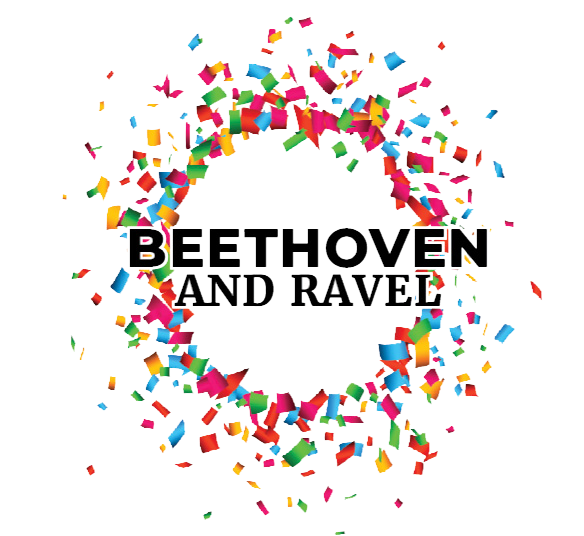 Saturday, January 18, 2025, at 7 p.m.
Saturday, January 18, 2025, at 7 p.m.
Victory Theatre
90TH ANNIVERSARY CELEBRATION SPONSOR
Mr. & Mrs. G. Richard Eykamp
CONCERT SPONSOR
Dr. Lee & Kirsten Wagmeister
MUSIC SPONSOR
Anonymous
 | EVANSVILLE PHILHARMONIC ORCHESTRA | |
MAURICE RAVEL | Piano Concerto in G Major, M.83 Allegramente Parker van Ostrand, Piano |
INTERMISSION
| LUDWIG VAN BEETHOVEN (1770-1827) | Symphony No. 3 in Eb Major, op. 55 “Eroica” |

Official IT Services Provider
Official Photographer: Daniel Knight of Studio B Photography
Steinway is the official piano of the Evansville Philharmonic Orchestra
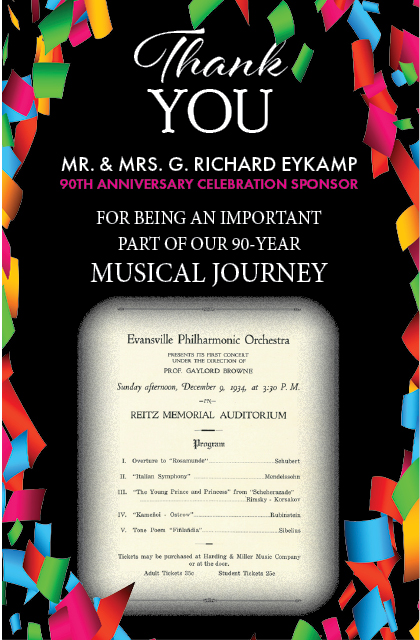
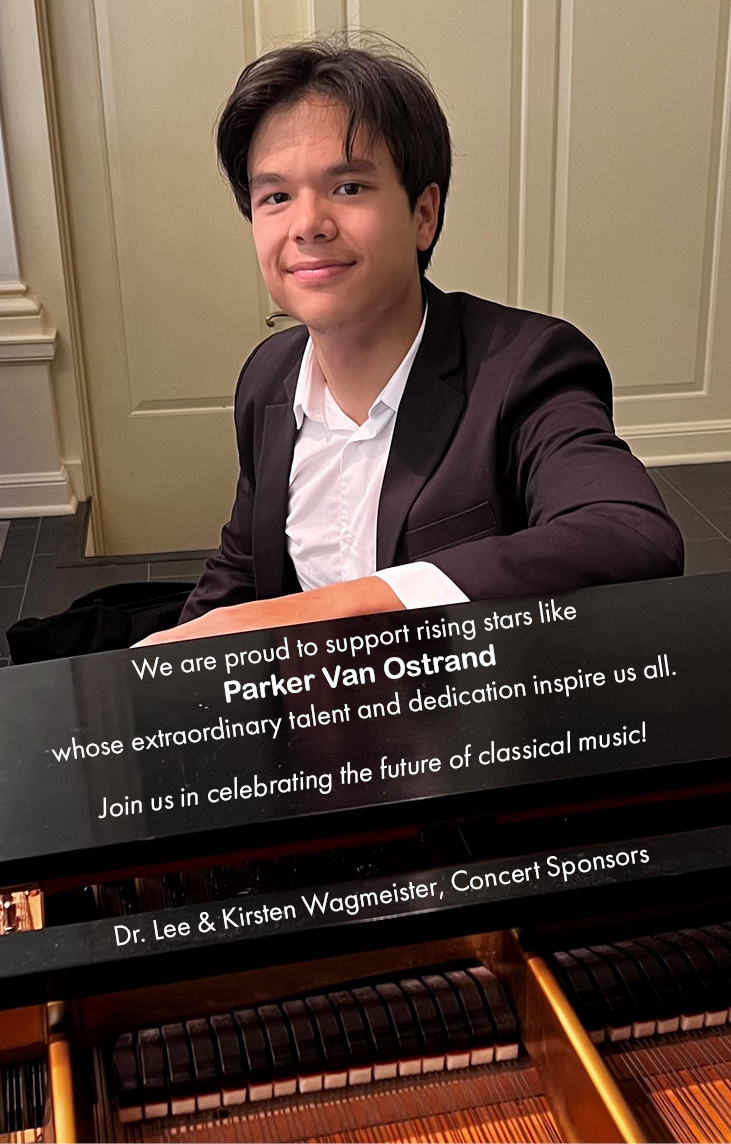
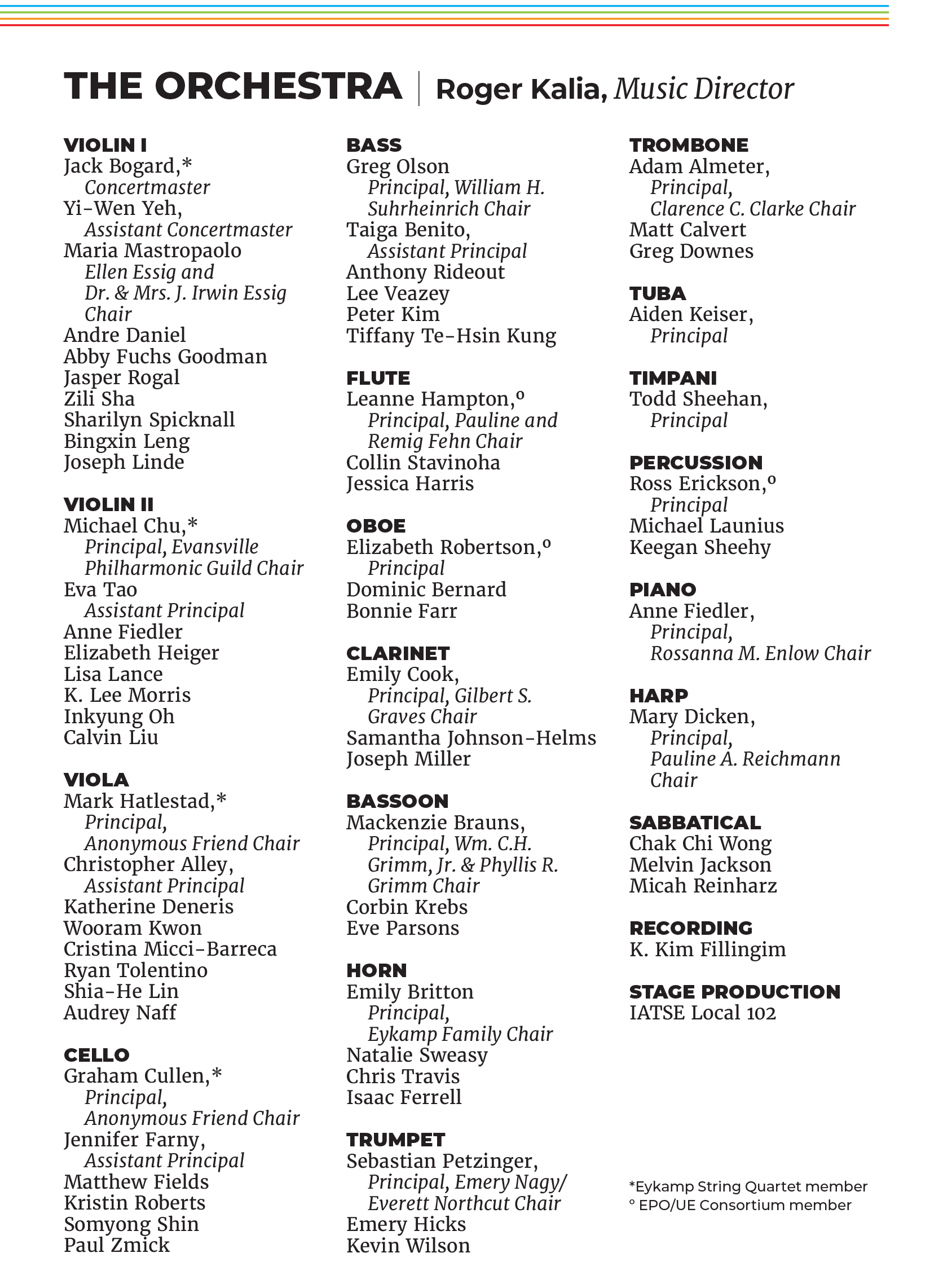
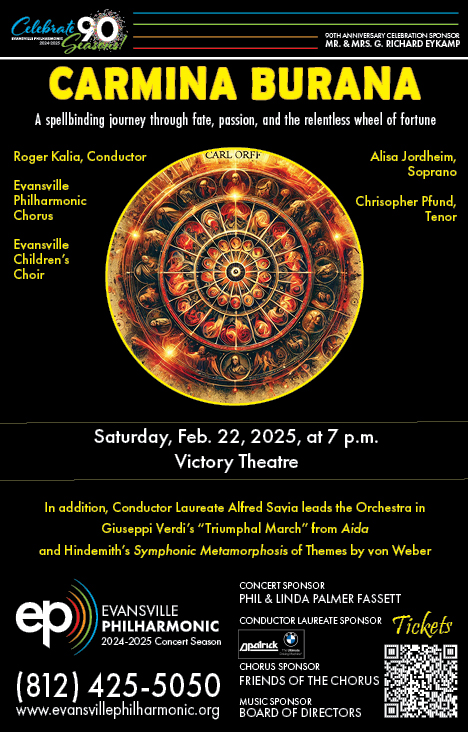
Written by Bill Hemminger
PIANO CONCERTO IN G MAJOR
MAURICE RAVEL
Duration: 23 Minutes
One of France’s greatest composers, Maurice Ravel, was born in 1875. His musical talents manifested themselves early, and he entered the Paris Conservatory when he was only 14, finally leaving in 1905. Many of his finest works were written while he was at the Conservatory—the scintillating String Quartet, the Sonatine for piano, along with various other virtuosic piano works such as Jeux d’eau and Miroirs. Ravel was a meticulous craftsman, his works often referred to as “jewel-like,” with great attention to form and precision of expression. His personal life was almost monastic: he never married and led a reclusive existence. For a short time, he served as an ambulance driver in the early years of World War I, but his delicate temperament could not abide the horrors of the battlefield, and thankfully he was discharged from service. In 1928, the same year Ravel was awarded an honorary degree from Oxford University and the same year he wrote world-famous Boléro, he made a triumphant tour of the United States, where he conducted many of his own works and absorbed the jazz sound that permeated music venues at the time. He met George Gershwin, whose music he much admired. It is said that Gershwin asked Ravel to give him lessons in composition whereupon Ravel, praising the innovative work of the American composer, noted that Gershwin wouldn’t want to sound like “bad Ravel” and declined the offer. Tonight’s piano concerto (1931) was one of Ravel’s final compositions, and, although he lived until 1937, Ravel developed aphasia and was not able to talk or to write music for his final five years. A terrible ending for a quiet life lived via the creative, communicative language of music.
The Concerto in G major begins with a signature percussive snap, not unlike the crack of a whip. Throughout the concerto, the orchestration makes much of percussion instruments, and wind instruments are regularly given solo lines, especially in the second movement. Ravel intended that this concerto be fanciful and entertaining, unlike the heavier—even pompous, as he might have said—romantic concertos of Brahms, for instance. Ravel’s debt to jazz is evident from the beginning, as the clarinet uses long slides in its declamations, and the entire movement bubbles with syncopations. The second movement opens with a lyrical piano solo, one of the most beautiful moments in classical music. The pianist’s left hand consistently plays in 3/8 time underneath the ¾ meter, with touching suspensions, of the right hand; it is a subtle but enchanting tension. The orchestra joins, and the piano becomes a fluid accompaniment until the movement closes, quietly as it began. The final movement sparkles with great speed and characteristic humor. This presto lasts only about four minutes, and the concerto ends a sort of hiccup, much as it began.
SYMPHONY NO. 3, “EROICA”
LUDWIG VAN BEETHOVEN
Duration: 48 Minutes
Ludwig van Beethoven, 1770-1827, was a German pianist and composer. His childhood in Bonn has been well-documented: he had an abusive, alcoholic father; he was mocked and bullied in school, mostly for his dark skin; he was melancholic and withdrawn; by the early age of 18 he became responsible for his family’s wellbeing. His later life gave him not much more personal satisfaction: he never married, and his bouts with anger and depression kept him from forming positive, dyadic relationships. Beethoven was never in good health: a short list of the many conditions from which he suffered would include deafness, colitis, rheumatism, typhus, skin disorders, abscesses, inflammatory degeneration of the arteries, jaundice, and chronic hepatitis, among others. That this extraordinary individual—who performed his first public piano concert at the age of 8—could manage to create and compose nine symphonies; an opera; 32 piano sonatas; five piano concerti; a violin concerto; 16 string quartets; 10 violin sonatas; as well as overtures, countless songs and occasional pieces for voice, piano, and string trio surely speaks to the human genius for creative self-expression as well as the benefits of sustained, focused work.
And this man grew to become one of the greatest composers of all time. His musical genius spanned the gap between classical and romantic worlds, between respect for rules and tradition and the valuing of change and innovation. Despite his difficult family and personal circumstances, Beethoven grew up in the golden age of Bonn’s intellectual and cultural life: poets, artists, philosophers gathered and talked in public venues; ideas were discussed, positions were argued; the world of ideas was not far removed from quotidian concerns.
Tonight, the orchestra is performing Beethoven’s third symphony, so different from his first two symphonies and different still from the symphonies of his predecessors Haydn and Mozart. This is a ground-breaking work: its first movement alone is the length and complexity of its predecessor works, and three movements are yet to follow. Two massive, striking chords begin the composition, ultimately called “heroic,” completed in 1804. Its original title was “Bonaparte,” in honor of the champion of the French Revolution. But, when Napoleon named himself emperor, so often the unbridled hubris of those in power, a disgusted Beethoven erased its attribution to the absolute ruler and instead provided the title “Eroica.” Some scholars have suggested that Beethoven may have been thinking about himself—and his heroic struggle for recognition, for acceptance, for appreciation, for love. In any case, the symphony expresses innumerable emotions—the drive and drama of the first movement; the plangent distress of the second movement, a “Funeral March,” with its depictions of the mass funeral processions taking place in Paris at the time; the third movement whose energized upbeat confidence suggests hope; and the fantastic fourth movement, a theme and variations one of whose sections is a fully worked-out fugue followed by a flashy coda.
- Podcast
- Conductor Biographies
- Bill Hemminger Biography
- Photos
- Videos
- Articles and Reviews
- Radio Broadcast Schedule
- History of the EPO
- Mission and Values
- Board of Directors 2025-2026
- Sponsors 2025-2026
- Philharmonic Gives Back
- Donors 10/1/2024 - 10/1/2025
- Thoughtful Tributes 10/1/2024 - 10/1/2025
- Past Events




